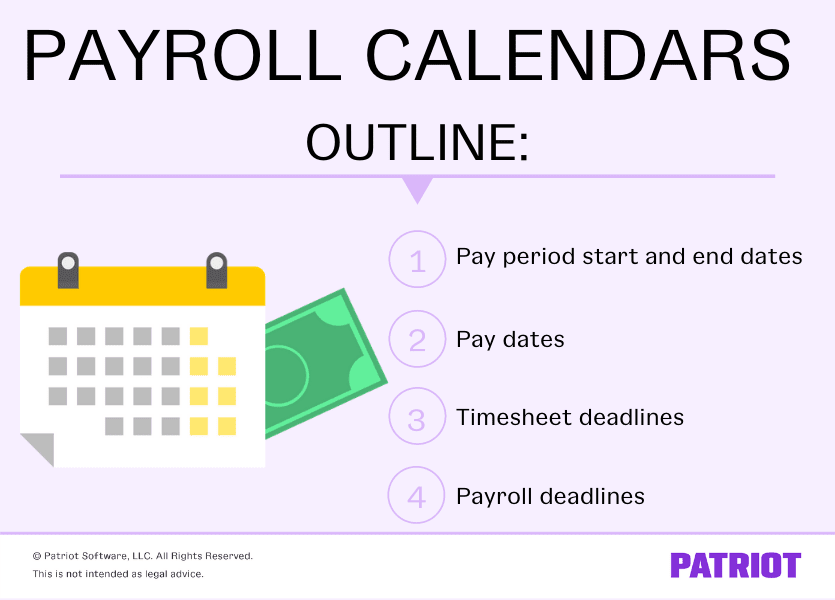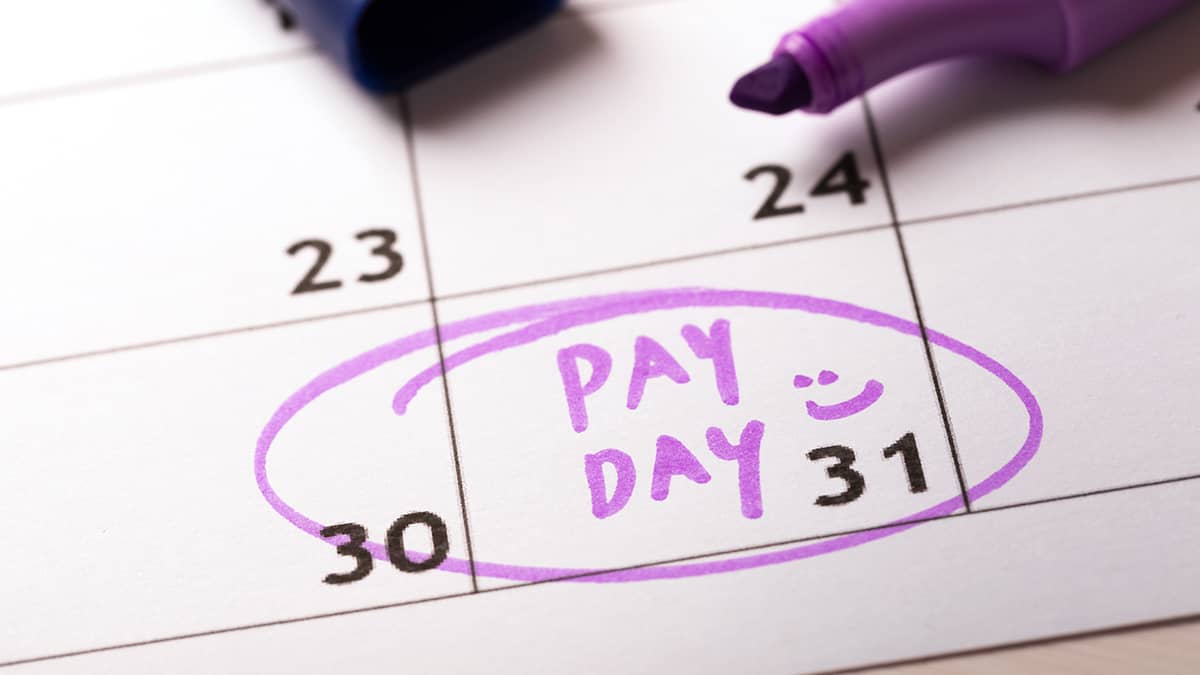Employer A runs payroll at the same time every regular pay period. No hiccups—just a smooth, reliable process. Employer B tends to scramble, often forgetting about cutoff periods and being forced to expedite payroll. Quite stressful, and a bit expensive after a while.
The difference? Employer A uses a payroll calendar—and sticks to it.
What is a payroll calendar?
A payroll calendar is a resource outlining the start and end dates of pay periods as well as pay dates. Employers can use payroll calendars to determine when they need to collect employee timesheets and run payroll.

Payroll calendars are based on pay frequency, direct deposit processing times, and banking holidays. So if you want to use a pay calendar, it might look a little different than the calendar someone else is using.
6 Steps to create and stick to your pay calendar
Whether you’re using payroll software or doing payroll by hand, creating and sticking to a payroll calendar is a must. Use these steps to get started.
1. Choose a frequency
First up: choose your pay frequency. Pay frequency is how often you pay employees. This also determines your pay period start and end dates.
When it comes to choosing how often you pay employees, you have a few mainstream options:
- Weekly: Once per week
- Biweekly: Once every other week
- Semimonthly: Twice every month
- Monthly: Once per month
After selecting your frequency, you can set up your payroll calendar with the pay period start and end dates. Typically, a pay period begins the day after a payday.
Alert! Follow state laws
The only federal law regarding how often you need to pay employees is maintain a consistent frequency. Most states, on the other hand, have frequency requirements.
Depending on your state, you may be limited to which frequencies you can use. Pay attention to pay frequency requirements by state before setting up your calendar.
2. Monitor holidays
There might come a time that you get running payroll down to a science … until a banking holiday comes along and throws everything off.
When it comes to creating and setting up a pay calendar, remember to take holidays into account. So, what happens if payday falls on a bank holiday? If payday falls on a bank holiday—or around one—employees may not receive their wages on time.
You likely need to adjust your payroll calendar to account for the holiday. For example, you might collect timesheets and run payroll one business day earlier to ensure your employees receive their wages on time.
3. Get your dates in order
After deciding on your pay frequency, you can start setting up your payroll calendar with the important dates you need to remember. On what days do you need to collect timesheets? Run payroll? Actually pay employees?
Set deadlines for when you need to:
- Collect timesheets
- Run payroll
- Pay employees
And once you’ve gotten your dates in a row, it’s time to…
4. Let employees know
Your next step to sticking to your pay period calendar is to let employees know about it. Notify them of when they need to submit timesheets so you can run payroll. And, let employees know when they can expect their wages.
If there are banking holidays that impact your payroll calendar, give employees plenty of warning if payday is going to be delayed.
You might consider giving employees a pay period calendar at the beginning of the year so there are no surprises.
5. Set reminders
Where would we be without our Post-it Notes and cell phone alarms? More than likely, we’d be forgetting to call people back and crossing tasks off our to-do lists.
So if you want to stick to your 2020 payroll calendar, set reminders. Maybe you have a recurring alarm in your phone alerting you that it’s time to collect timesheets and run payroll. Do whatever works for you when it comes to setting up reminders.
6. Use software
Last but certainly not least, using software can help you stick to your business’s payroll calendar. Payroll software makes it easy to get into a routine. Not to mention, it streamlines the process, saving you precious time.
And if there’s a banking holiday, your payroll software provider might send you a notification reminding you that you need to adjust your payroll.




